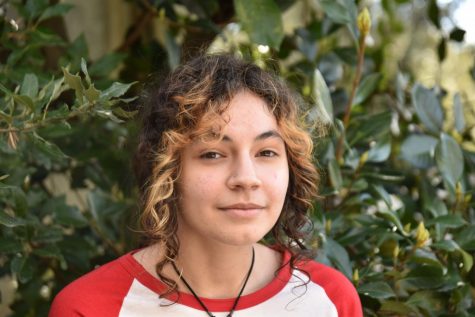Art department adapting to an online environment
Photo courtesy of Patrisha Gardner
Kayla Quares works on a project for Ken Alexander’s design drawing class. Photo taken March 18.
May 13, 2020
Many departments at Los Medanos College have struggled in their adjustment to remote teaching and learning, and the Art Department is no stranger to this new challenge.
The biggest hurdle to the education of many art students, who are now learning online, is the fulfillment of lab hours. Previously, students fulfilled lab hours by performing hands-on activities alongside their instructors outside of class, but now, students have to figure out how to take care of their class requirements in a remote fashion.
Art instructor Eric Sanchez originally hoped to continue in-person meetings after the campus closure, but soon after the shelter-in-place order was set, he realized he had to change his plans.
“My students signed up for face-to-face sessions and to be in a community environment, so we meet regularly as a group. None of these students signed up for an asynchronous fully online course,” said Sanchez.
Implementing lab hours has not only been a challenge for instructors, but also for the students who originally signed up for hands-on classes. LMC student Ginger Cole, who is currently taking Figure Drawing and Intermediate Art, explained the difficulty.
“It’s difficult to do these art projects online, especially for figure drawing,” said Cole. “That is a class that relies on actually being there and being able to see the live model in front of you, so that class is sort of difficult.” She explained that the other art class she is in “is relatively easy, though some instructions are lost and there are miscommunications sometimes.”
Another problem faced by students transitioning online is the lack of equipment and resources required to complete their work.
“A lot of our students take classes at LMC partly because it provides them with the equipment they need,” said Curtis Corlew, who teaches courses in the visual arts which use apps like Photoshop. “Just like if you were taking a welding class or ceramics class, you don’t have a kiln or a welding machine.”
Similarly, remote learning lacks in-person support from instructors.
“When [students are] learning a lot of complex things, I’m there in the lab to [look] over their shoulders and talk to them, help them through things,” said Corlew. “That’s the thing that I do best and I can’t do that now.”
Corlew, like other instructors, now teaches through Zoom. Because of the current situation, Corlew finds himself virtually face-to-face with students doing demos for lessons.
“I talk to them, I try to be there to help them through the process,” he said. “We are trying really hard. We are realizing that everyone’s situation is different.”


